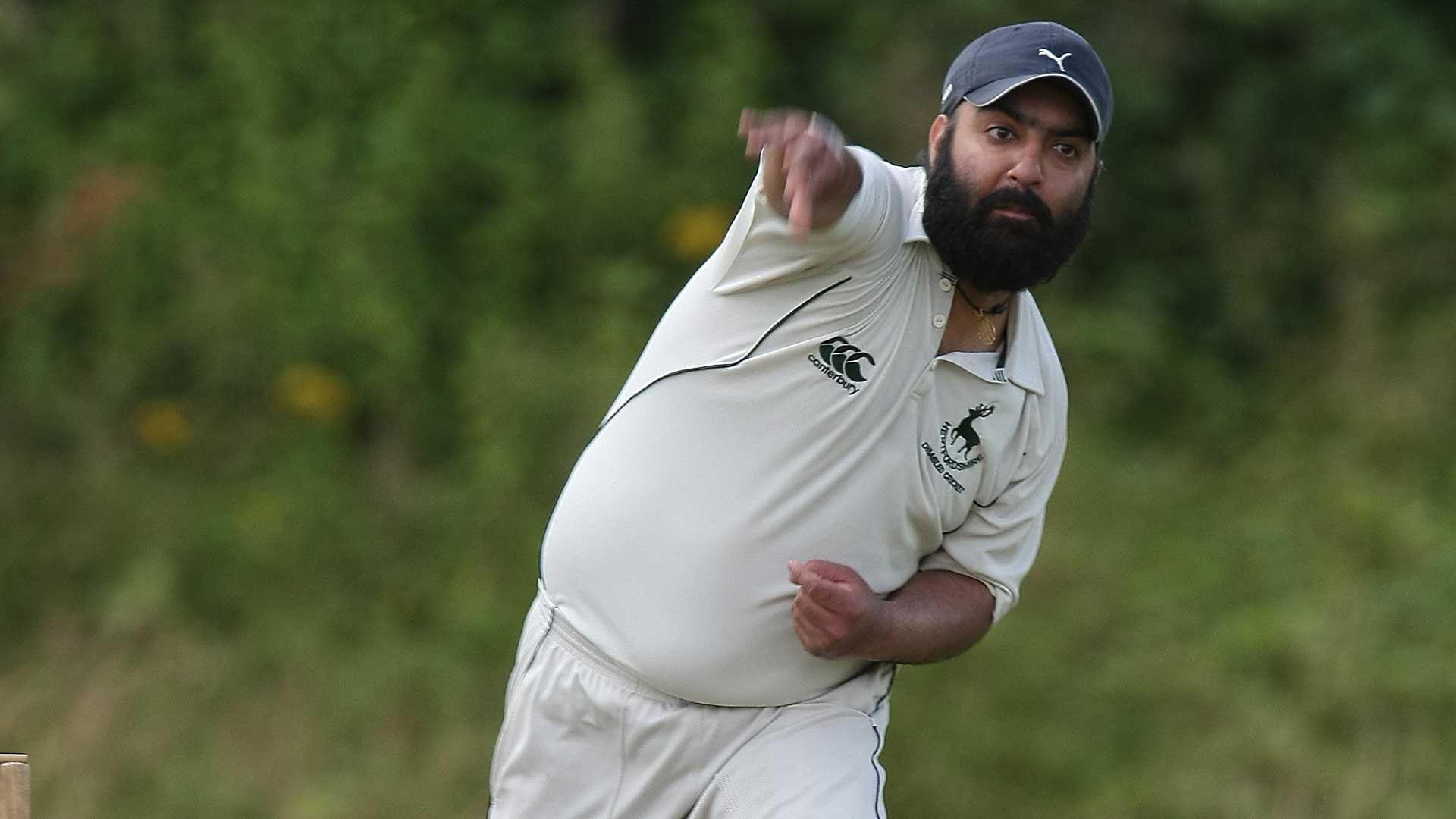



I thought I would start these Quarterly Newsletters with a look at a few ‘Firsts’.
Each of you that has played for Middlesex or Sunrisers have been allocated a number. For Middlesex’s Women, Sunrisers and Middlesex Disability players this is quite simple, in that you only have one number. For Middlesex Men, however, it is a little more complicated as some of us have one, two or three numbers. Take Paul Weekes, for example, more of whom later.
Weekesy played 1st Class, List A and T20 cricket for Middlesex CCC and he therefore has three numbers. Paul was the 616th player to play 1st Class cricket for Middlesex, hence his membership number of the Association. He was also the 86th player to play List A cricket for Middlesex and the 1st T20 player. Recognition, when more than one player is making their debut, comes with your position in the batting order.
Right, so back to the subject of firsts.
First-Class Matches - The first Game
Middlesex’s first 1st-Class game took place at Cattle Market Ground in Islington on 6 & 7 June 1864. The opposition were Sussex. Middlesex won the toss and chose to bat. Edward Tritton and Thomas Case opened the batting but it was Tritton who faced the first ball in Middlesex’s rich and successful history. Whether Tritton left it alone, pushed it to extra cover for a single or hacked it over mid-wicket for four – I have no idea, but let’s for the highest scoring option!
Tritton was also the first Middlesex batsman to be dismissed too - ct Ellis b Fillery for 10. Middlesex were bowled out in their 1st innings for 261 with Thomas Hearne and Bransby Cooper scoring 50 each; Hearne was the first Middlesex player to raise his bat for a half-century. By close of play on Day 1 Sussex had been reduced to 91-6 with Vyell Walker taking five of the wickets to fall, the sixth was a run out.
Walker polished Sussex off in the morning for 111 and finished with the remarkable figures of 9-63, which are the 17th best innings bowling figures by a Middlesex bowler. Middlesex did not change their bowlers once in Sussex’s innings with Walker and Hearne sharing 81 consecutive overs.
Middlesex made Sussex follow on and the same pair bowled 71 consecutive overs to bowl the opposition out for 98 in their 2nd innings. This time the wickets were shared, with Hearne taking 5-44 and Walker 5-48. Walker’s figures of 14-111 are the 17th best match figures by a Middlesex bowler and they earned Middlesex a famous and comprehensive innings and 52 run victory in their debut 1st Class outing. Incidentally, Hearne was the first player to score a hundred for Middlesex, striking 125 against MCC on 1 August 1864 at The Cattle Market Ground in Islington. Jack Robertson still holds the highest 1st Class score for a Middlesex batsman with 331* against Worcestershire at New Road in 1949.
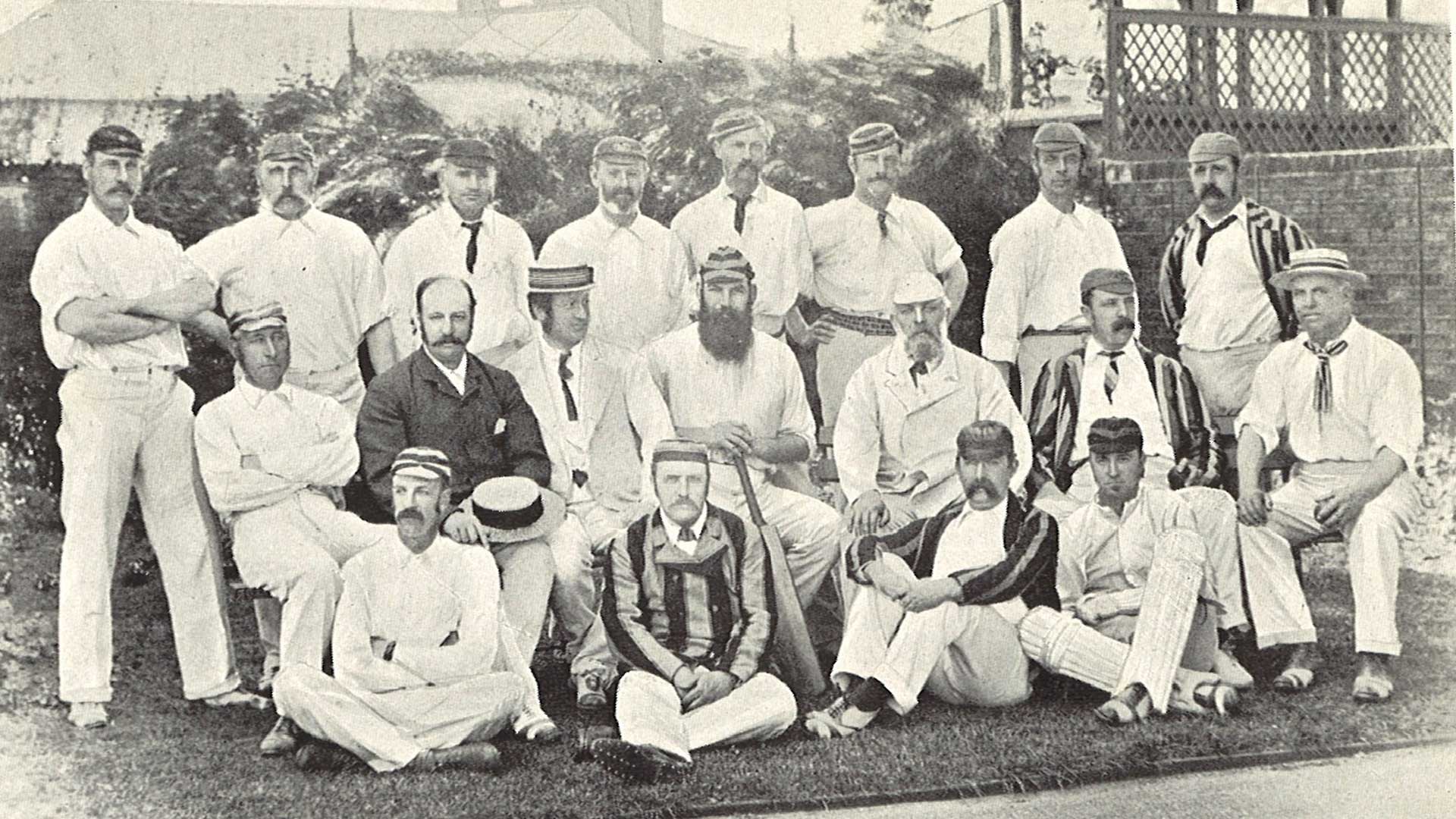
The first Player - Edward W Tritton
Tritton was born in Marylebone in 1844 and was educated at Eton College. He attended Christ College, Oxford, studied Law at Inner Temple and was called to The Bar in 1871. Tritton made his debut for Middlesex in 1864 and played in only 6 games for the club. His highest score for Middlesex was 65 against Surrey at The Oval in 1867, which was also his last game for the club. In total he scored 174 runs for Middlesex at an average of 21.75.
Most of Tritton’s first-class cricket was played for Oxford University, for whom he scored a couple of hundreds. In total Tritton played 39 1st Class matches and scored 1,000 runs at an average of 16.67. His final game of 1st Class cricket was played for MCC v Oxford University at Lord’s, where he scored 0 and 7*. Tritton also played a lot of cricket for Eton Ramblers and I Zingari.
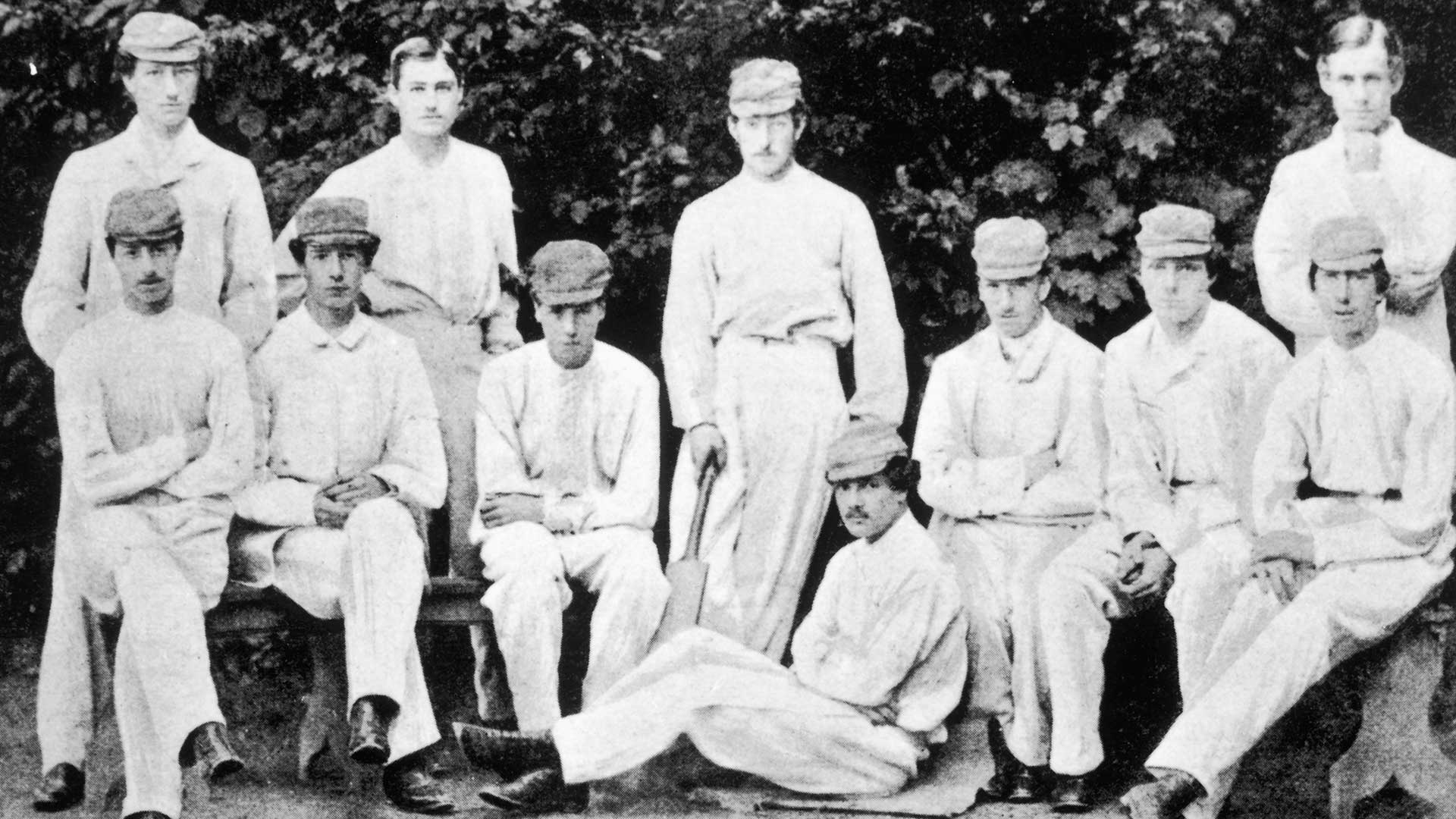
List A Cricket - First List A Match
Middlesex’s first List A match was played against Gloucestershire in Bristol on 22 May 1963. In Wisden the tournament was called The Knock-Out Competition. Reading Wisden, I do not get the feel the tournament was universally welcomed. Crowds were compared to those at the Association Football Cup Final, although Wisden did make some encouraging comments: ‘The new Knock-Out Competition aroused enormous interest’ and ‘there is no doubt provided the competition is conducted wisely it will attract great support in the future and benefit the game accordingly’, were the most positive.
Anyway, Gloucestershire won the toss and invited Middlesex to bat in front of an estimated crowd of 3,000. The match was a 65 over affair, with no bowler allowed to bowl more than 15 overs. Bob Gale and Robert (Knocker) White opened the batting and Gale faced the first ball. Wisden or Cricket Archive doesn’t say who was out first, but Peter Parfitt got a duck and Middlesex, at one stage, were 35-3. Ron Hooker (23), Ted Clark (42) and Don Bennett (31*) helped Middlesex post 170 as they were bowled out in the 65th over.
In reply Gloucestershire were skittled for 131 in 51.5 overs, with Alan Moss taking 4-14 in 11.5 overs. As an indicator of how outstanding performances in limited over matches would be viewed in future years, Bennett, with 31* and 1-54 in 15 overs, was awarded the Man-of-the Match. How Mossy didn’t get it I don’t know.
Middlesex’s run in the tournament ended in the next round when they were beaten by Northamptonshire at Lord’s. Colin Milburn was the star of the game taking 4-34 and scoring 84. Now that is a MOTM performance.
Incidentally, Eric Russell was the first Middlesex batsman to score a List A hundred. Russell scored 123 against Surrey at Lord’s in 1968. Owais Shah has scored the most List A hundreds for Middlesex with 12.
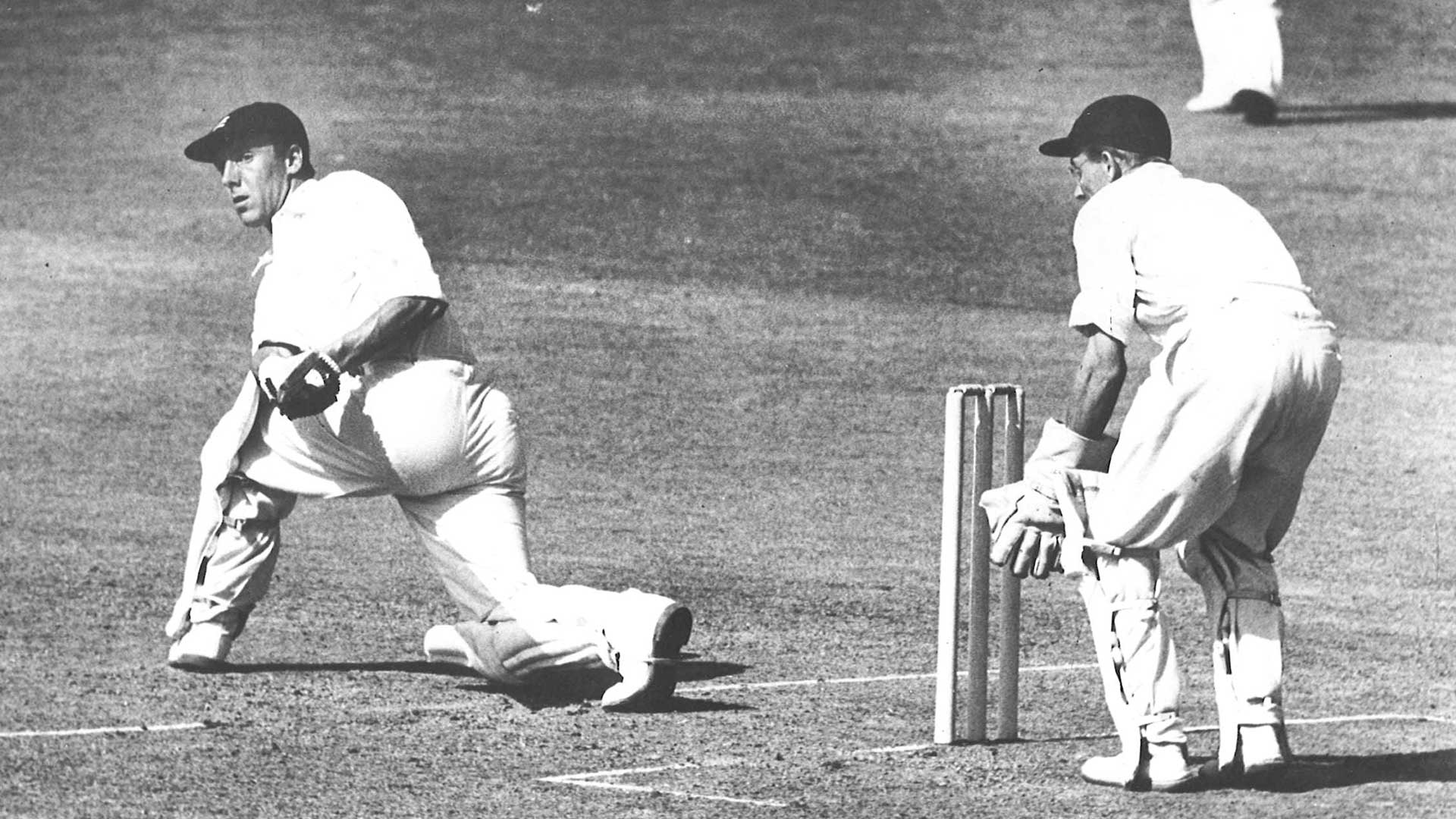
The First player
Robert ‘Bob’ Gale is honoured as Middlesex’s No 1 List A player, owing to the fact he opened the batting at Bristol in 1963. Gale was born in Old Warden in Bedfordshire in 1933 and was educated at Bedford Modern School. He joined Middlesex after doing his National Service.
Gale is best known to Middlesex players of my generation for being Chair of the Cricket Committee in the late 80’s and 90’s. This meant he was the person that offered you a contract or gave you your P45. I never received the latter but came close when a hip injury kept me out of action for a lengthy period of time. I remember contract meetings occasionally being followed by lunch at Oslo Court.
Gale was a fine, swashbuckling left-handed opening batsman for Middlesex between 1956 and 1966. He and Eric Russell became an excellent opening pair for the club for several years. He played in 219 1st Class matches for the club and scored 11,234 runs at an average of just under 30. Gale scored 1,000 runs in a season on 6 occasions, with his best summer being 1961, in which he scored 1,981 runs. In total Gale scored 13 hundreds for Middlesex, with his highest score being 200 against Glamorgan at Newport in 1962. He toured South America, Canada, USA and Netherlands with MCC.
On retiring from cricket he worked in The City for a gilt-edged broker, where he would often meet up for lunch with his great friend and former team-mate John Warr. On retiring Gale moved to Sussex but it did not prevent him becoming a fixture on the Middlesex committee and chair of cricket between 1989 and 1998. His work for Middlesex was recognized between 2001 and 2003, when he became President.
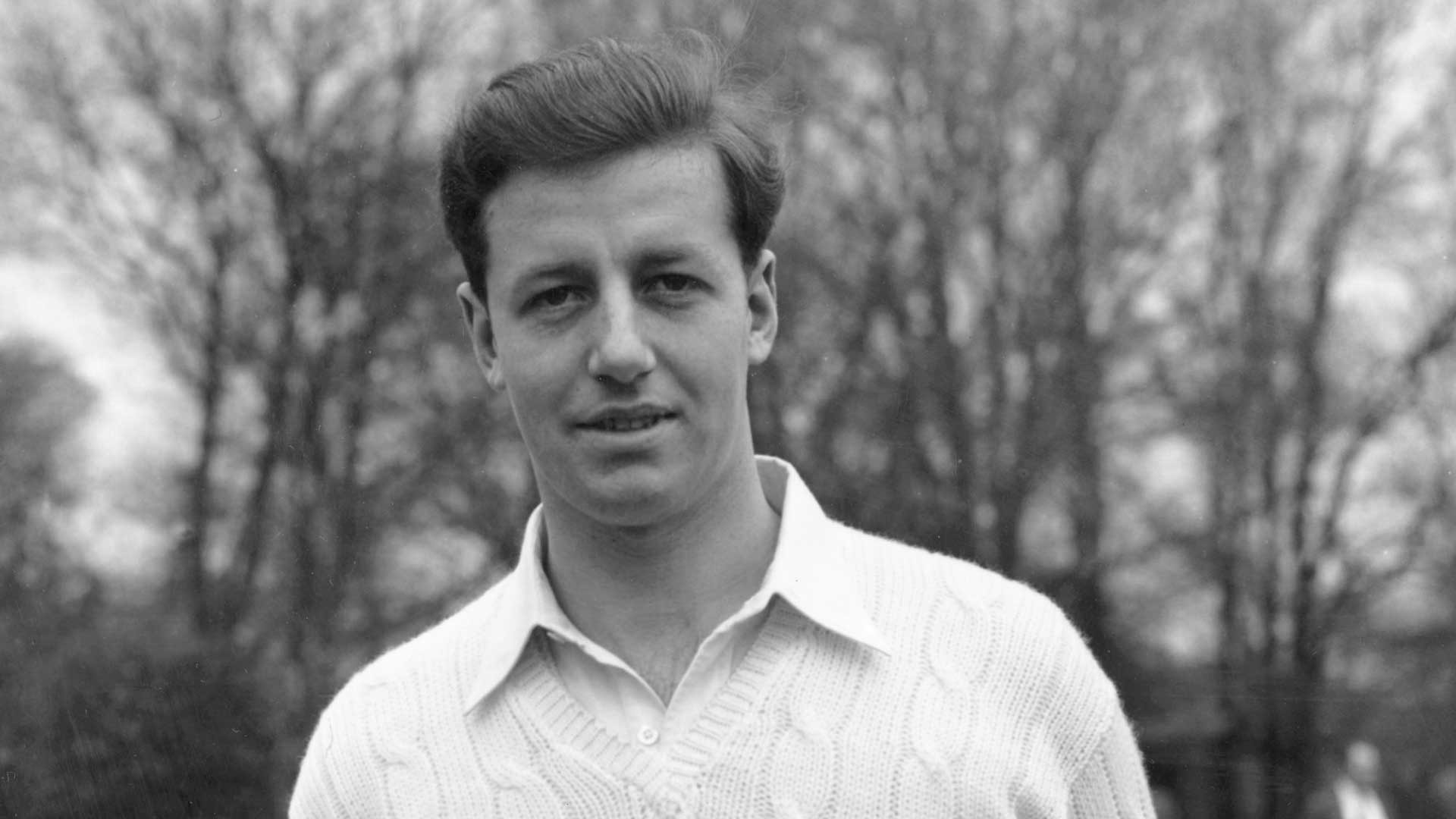
T20 Cricket - The First Game
It is safe to say that the introduction of T20 cricket was greeted with even greater scepticism than ‘The Knock-Out Competition’ in 1963. The form of the game was brought in to try and address a decline in attendances and interest in county cricket. To claim that 20 over cricket was invented in 2003 is pretty disingenuous, as it was a form of the game many of us had played at school or for your club mid-week. What 20 over cricket, and, let’s be honest, no other form of cricket had been to date, was dressed up and promoted like this. In an attempt to get families and children to matches, games were played in the evenings. And the combination of colour, noise and quick scoring immediately hit the spot. Spectators loved it and so did the players, even those who initially thought it was hit and giggle cricket. The prospect of playing in front of big crowds on television was too attractive to resist.
Middlesex’s first T20 match took place at The Oval on 13 June 2003. Paul Weekes opened the batting with Andrew Strauss. Weekes faced the 1st ball, scored the first runs (a boundary off Martin Bicknell) and was the first Middlesex player to be dismissed – ct Batty b Bicknell 4. Strauss, amazingly, was Middlesex’s main contributor, scoring 52 off 48 balls. Middlesex’s total of 155, however, was not enough as Surrey, in front of a crowd of 8,500, eased home by 4 wickets with four balls to spare.
Dawid Malan became the first Middlesex batsman to score a century in 2008, when his 103 helped propel the club to its one and only T20 triumph. Dan Christian, with 129, still holds the highest score of a Middlesex batsman in T20, which he blasted at Canterbury in 2014. Malan has scored three of Middlesex’s eight T20 hundreds.
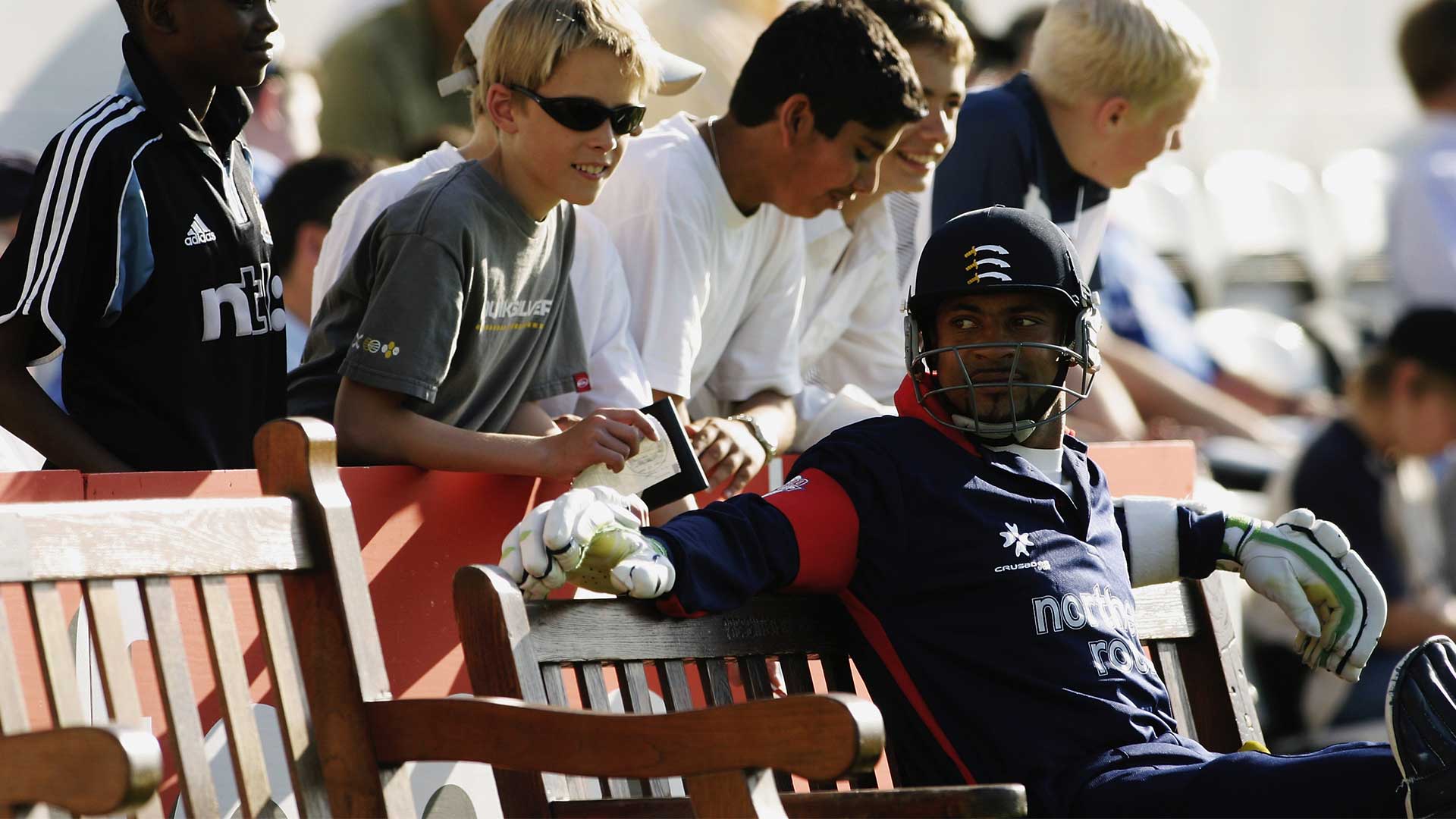
First T20 Player
Paul Weekes, like Bob Gale, owes being Middlesex’s No 1 T20 player down to the fact he was No 1 on the team sheet for the club’s first T20 match in 2003. Weekes was born in Hackney in 1969 and was a valuable member of Middlesex teams between 1990 and 2006. Weekes was a gifted all-rounder who played a role in Middlesex’s 1990 and 1993 County Championship triumphs, and the 1992 Sunday League victory. He batted everywhere in the top 7 and his off-spin, especially, in white ball cricket, was extremely useful. On top of this he had an excellent pair of hands and took many fine catches in the slips.
Yet it is probably down to the fact that he played his best cricket during a period when Middlesex were struggling as a team that his figures and performances for the club are not recognized as highly as they should be. A closer inspection of Weekes’s career reveals some fantastic figures, statistics that rightly suggest he is one of the best all-rounders the club has produced.
In total he played 575 games of cricket for Middlesex. During these matches he scored over 19,000 runs, took 632 wickets and 352 catches. In the all-time performance lists, Weekes appears in 6 of the 9 groups. List A cricket was probably the area in which he was strongest and he is number three in each category – most runs, most wickets and most catches.
These performances were recognized by the England selectors who picked him for a number of England A/Lions matches and there was a period where he was very close to featuring in the England one-day side.
When his professional playing days ended Weekes returned to the Middlesex County Cricket League, where he brought success to the clubs he played for. His passion for coaching began when he was in his teens and he continues to play a role in the development of Middlesex cricketers in several areas of the pathway.
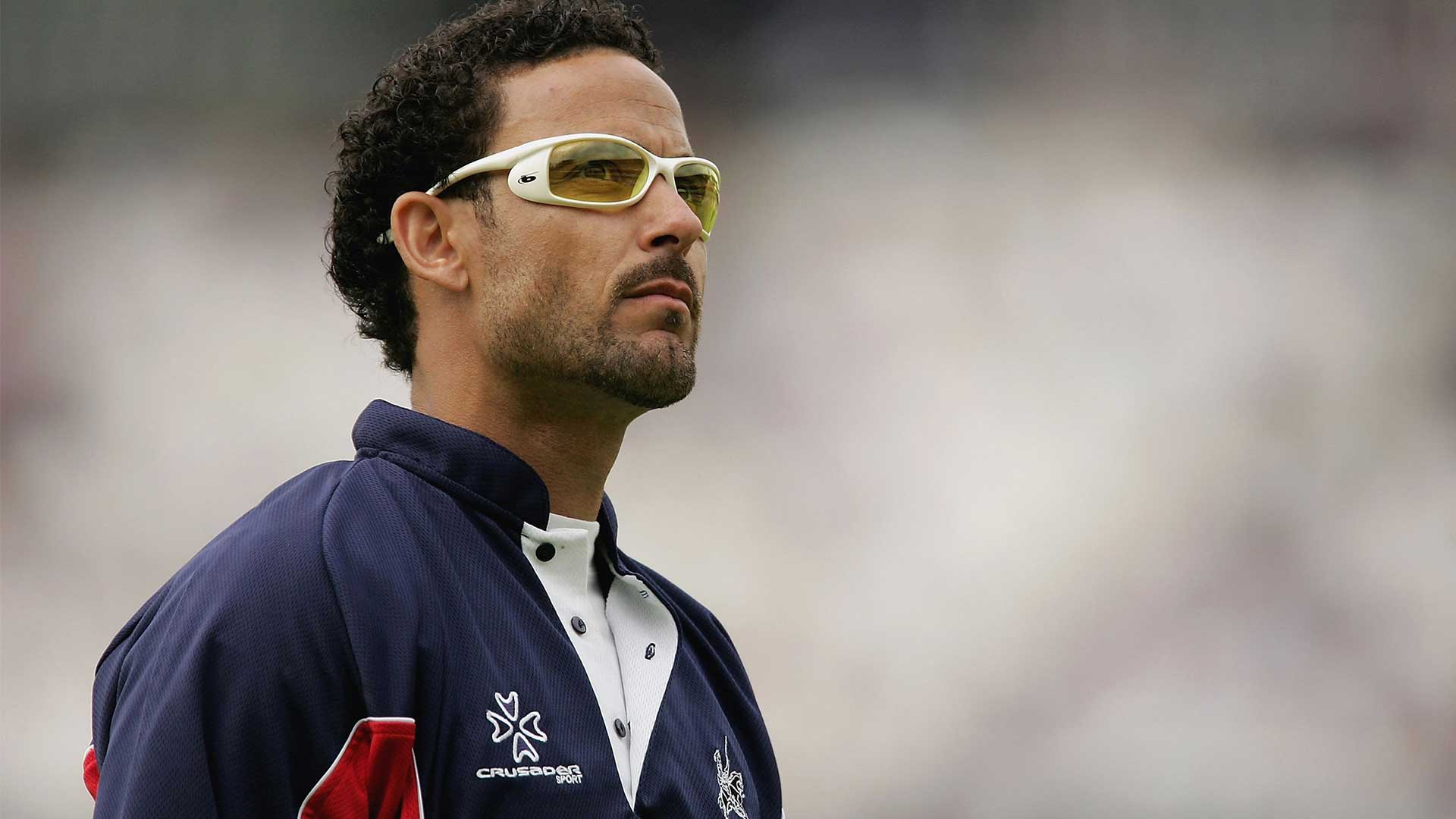
Sunrisers
Sunrisers played their first competitive match against Southern Vipers at Chelmsford on 29 August 2020, at a time when Covid 19 was dominating the UK and World news. Cricket was one of the first sports played as Covid restrictions eased but, even so, the Rachael Heyhoe-Flint match was only allowed to be played with the players following strict government protocols.
Vipers won the toss and invited Sunrisers to bat. Katie Midwood faced the first ball but it was Amara Carr who was the first Sunriser player to be dismissed, caught by Paige Scholfield off the bowling of Lauren Bell. Carr scored 6. In the innings, Mady Villiers became the first Sunrisers player to post a half century, scoring 64 in her teams total of 202.
Villiers was also the first player to take a wicket for Sunrisers, trapping Georgia Adams LBW for 37. Sadly for Sunrisers, the Southern Vipers cruised to a seven wicket victory with 12 overs of the match remaining.
Not the best of days for Sunrisers but it heralded the birth of a new team in a new structure for the women’s game, and the start of a new era for women in cricket; an era where they have become professional cricketers.
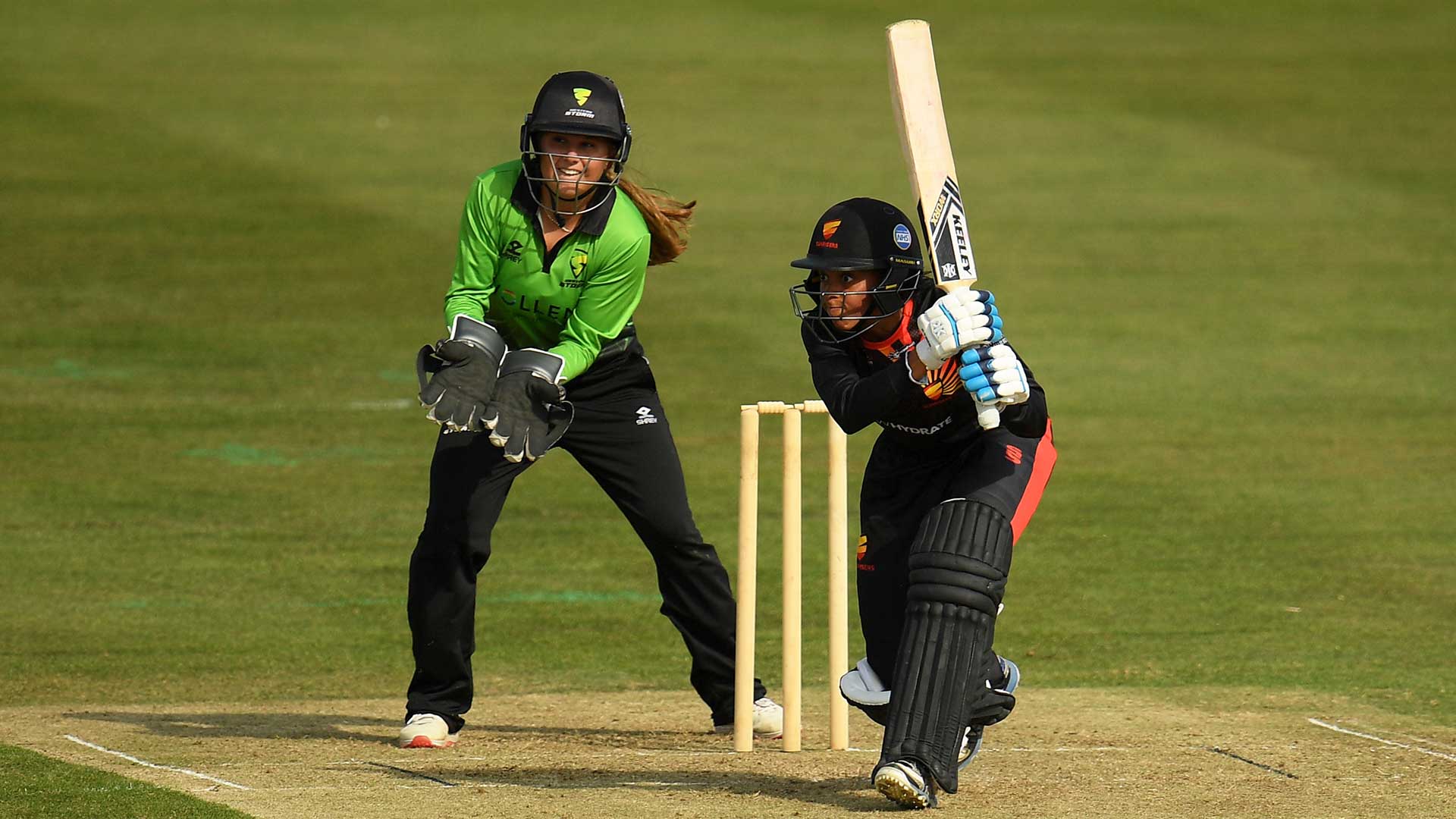
Amara Carr
Amara began playing cricket for Plympton Women in her mid-teens and it didn’t take long before her talent caught the eye of the Devon selectors, who picked her to represent the county as a 15-year-old. Amara comes from a cricket-mad family with several members of her family – brothers and sisters – also playing for Devon.
Somerset recognised Amara’s talent as a wicket-keeper/ batter and selected her to represent them before she moved to London to play for Middlesex in 2017. The move to London allowed her to sign her first professional contract with Sunrisers in 2020. Her performances for Sunrisers have earned her contracts to play for London Spirit in the first two years of The Hundred.
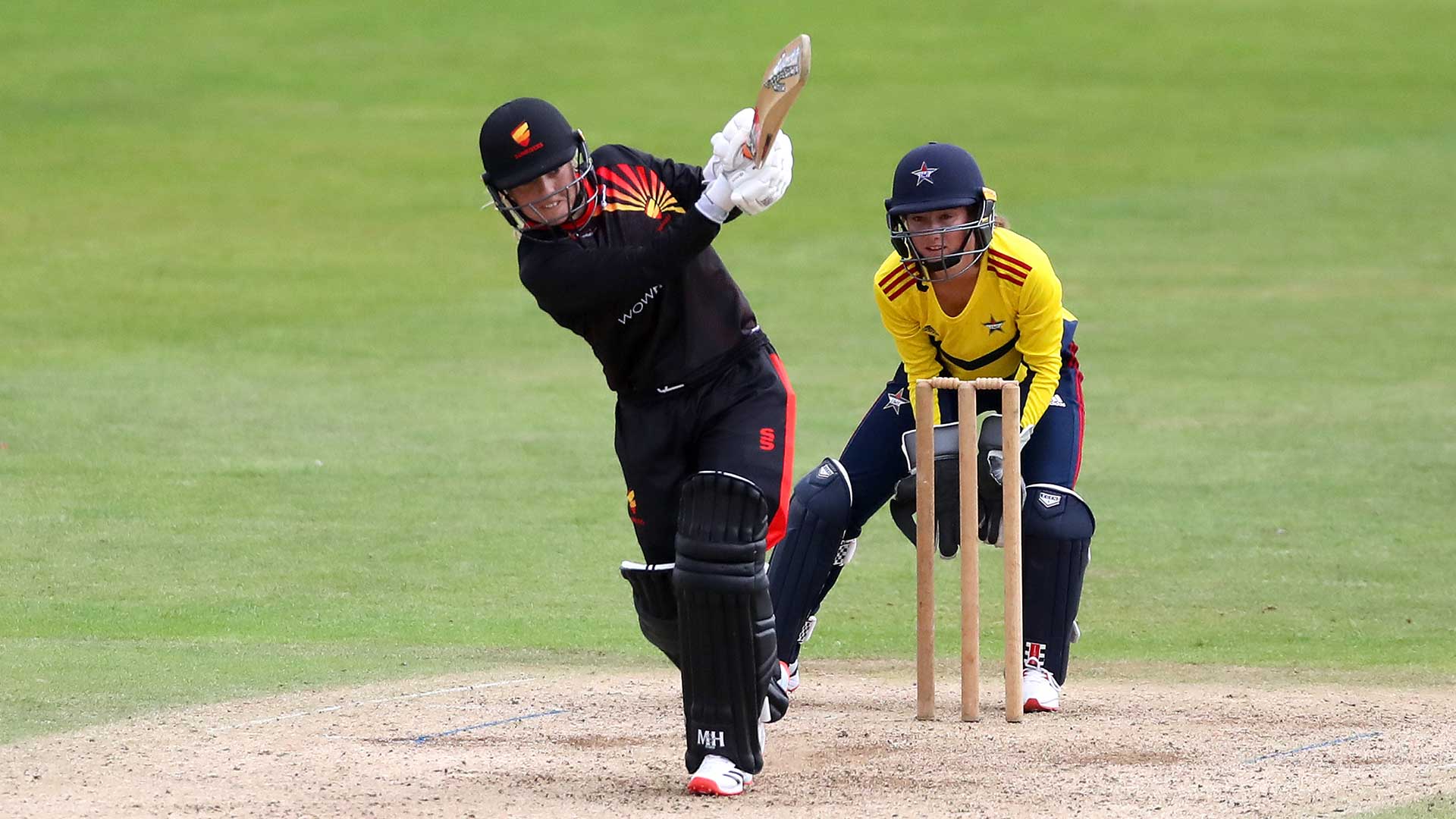
Middlesex Women
Records show that Middlesex Women have been playing matches since the 1930’s. The fixture list then was pretty random and the matches played were friendlies. These factors, along with the belief that the selection may not have been as thorough as it could have been, is why 1980 is recognised as the year in which the team played its first match.
1980 was the first year Women’s Cricket had a recognised tournament – The Women’s Area Championship – and Middlesex Women made a victorious start to their competitive cricket by winning the tournament. Middlesex were in Group 3, with East Anglia Women and Thames Valley Women, and moved through to a semi-final against Surrey unbeaten.
Surrey were comfortably dealt with and a 102 run victory set up a final against Midlands Women at Pilkington’s Ground in St Helens, Lancashire. In the final, Middlesex scrambled to 144 in 55 overs, a total they managed to defend to set up an 8 run victory.
The road to the final began on 8 June 1980, with a match against Thames Valley Women at Westwood Park, Little Chalfont. Thames Valley Women won the toss and opted to field and it was Margaret Campbell that faced Middlesex’s 1st competitive ball. Campbell was the first batter to be dismissed too, when she was bowled by Goodchild for 8.
Middlesex were in a bit of trouble at 88-5 but Valerie Castle, batting at 7, played a match-winning innings to take her side to 248-6. Castle struck Middlesex’s first half century and finished the innings unbeaten on 81, which was scored off 102 balls.
Cathy Mowat took the first wicket in her first over when she bowled Wendy Fader for 0. Thames Valley Women never looked like reaching their target and Mowat finished with the excellent figures of 3-10 off 6 overs. Mowat was not the only bowler to shine as Thames Valley Women were bowled out for 56. Glynis Hullah claimed 4-9 in 4.3 overs and Rosamund Heggs finished with the remarkable figures of 3-2 off 6 overs.
Middlesex Women’s dominance of the women’s game continued in 1981 when they won the tournament for a second consecutive season.
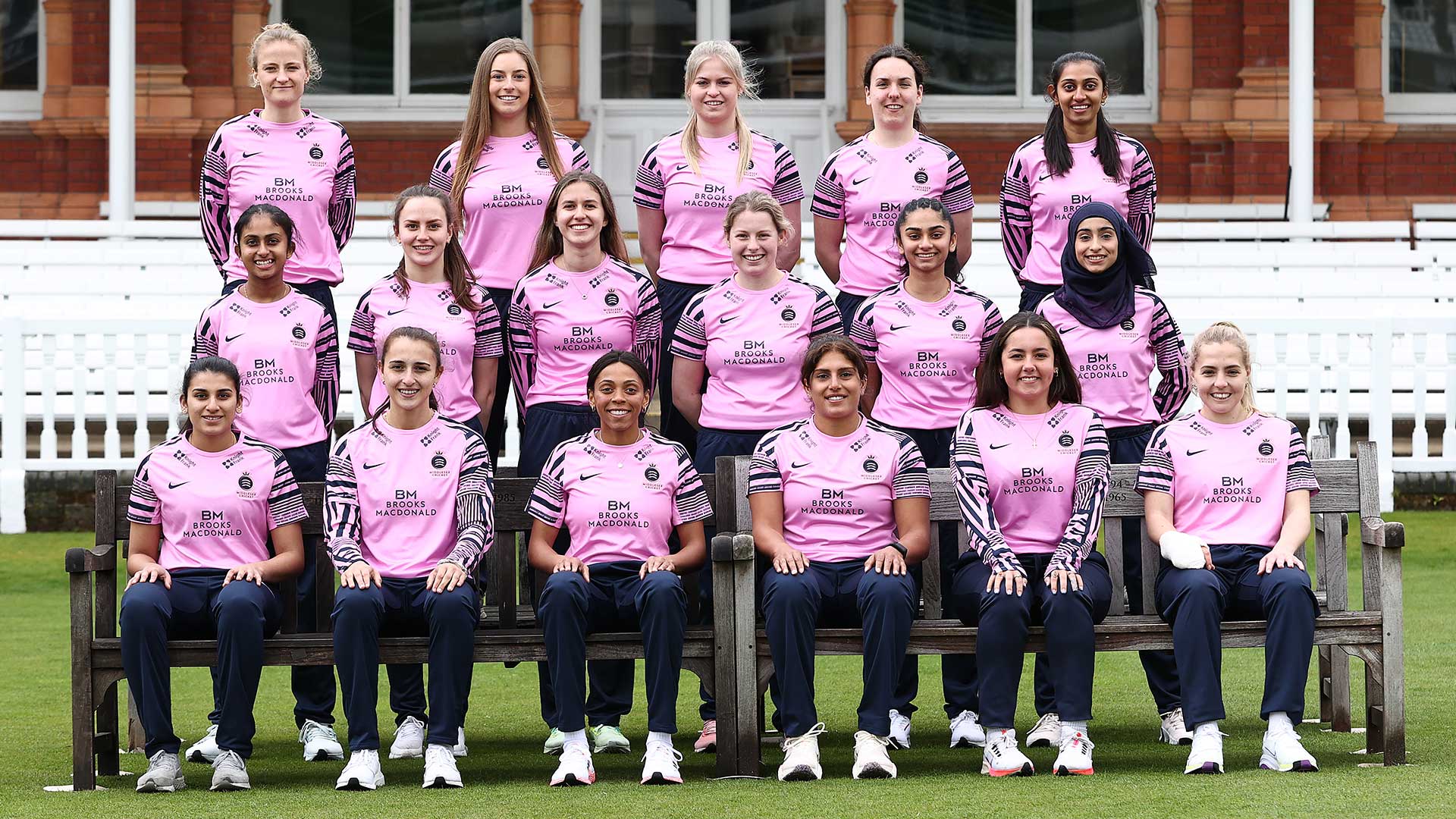
Margaret Campbell
At the time of writing this almost 150 women have played recognised/competitive cricket for Middlesex, and Margaret Campbell proudly sits at No1. Margaret was born in Northumberland in 1939 and played for Yorkshire Women, and North of England Women in the early 60’s. She receives this honour through being the first name on the team-sheet for Middlesex Women’s inaugural Women’s Area Championship match in 1980.
Yet, it was only when Margaret moved to London that more regular scorecards of games she played in began to appear. Margaret was a left-handed opening bat who bowled right arm off-breaks. Along with playing for Middlesex she also played club cricket for Riverside Women, a team that played around the Chiswick area until 1999.
Margaret played a leading role in Middlesex winning the opening two Women’s Area Championship tournaments in 1980 and 1981. Scorecards show that she continued playing cricket well into her late 50’s. Margaret, sadly, passed away in 2013 and she remains one of the major figures in the history of women’s cricket in Middlesex.
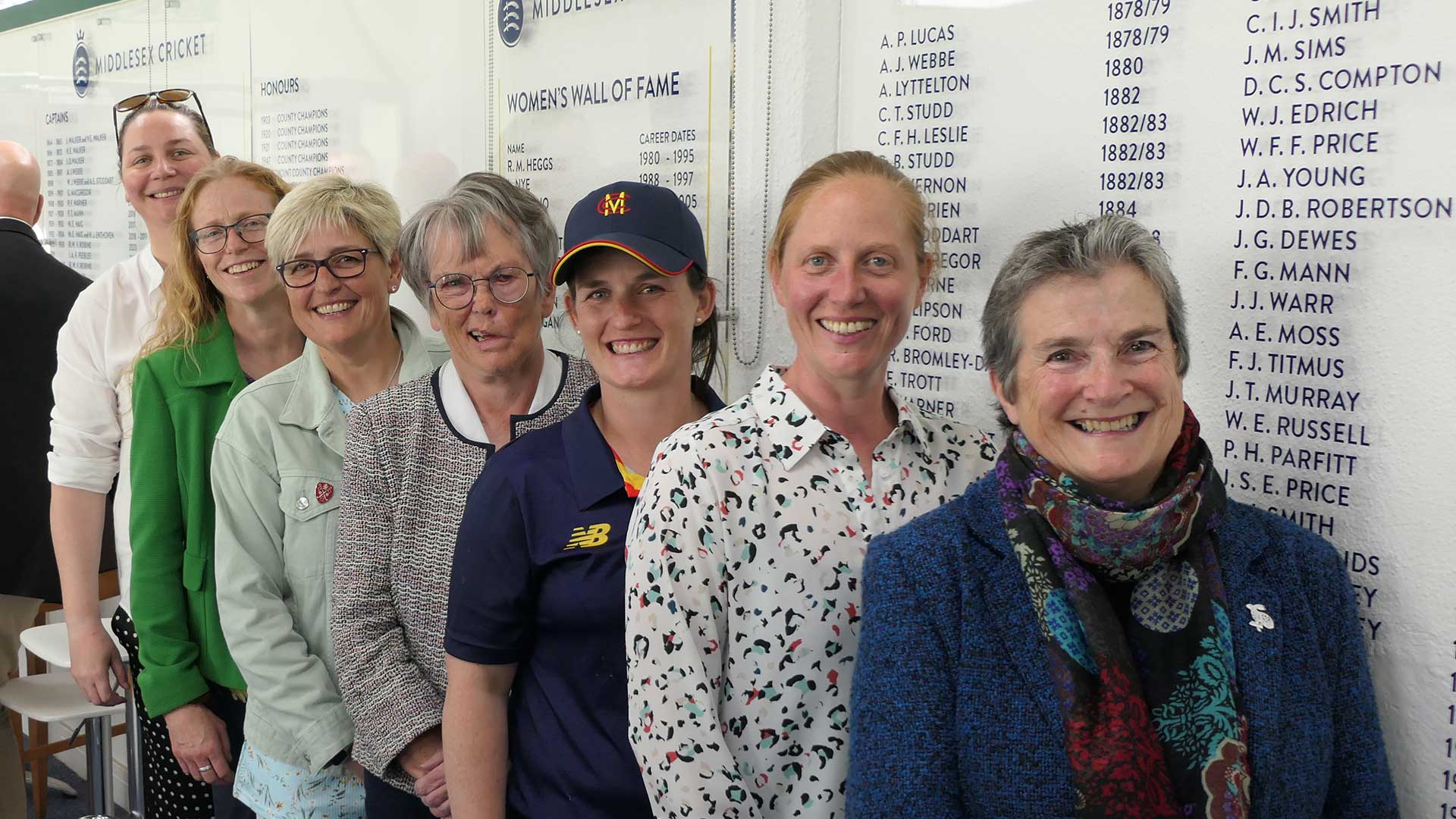
First Disability game
On the 9th of June 2013 the Middlesex Disability 1st XI took the field for the first time, the game was played at Harefield Cricket Club vs Hampshire Disability 1st XI. Hampshire won the toss and decided to bat.
Alex Hammond and Hugo Hammond opened the batting for the visitors and quickly both scored 50's very quickly. Alex scored 56 before retiring hurt and Hugo went on score 90. The Hampshire number three, D Reynaldo, then hit 101 and number 5, S Graham, hit 50 before retiring. Hampshire went on to post a whopping 383-3 in their innings.
The Middlesex bowling attack took some punishment, although the pick of the bowlers were Selim, with figures of 1 for 25, and Amanjit, who took 1 for 36.
In reply, Middlesex faced an uphill battle against an experienced and talented bowling unit. It proved to be a chastening afternoon, as the Middlesex batters were put on the back foot early, with very little experience amongst the team to draw on. The wickets fell steadily and after only 13 overs of the innings Middlesex were all out, dismissed for just 56, with only two players getting into double figures - Amanjit Singh (15) and Usman Butt (14) .
At that time, Hampshire had 7 England disability internationals playing against a group of Middlesex players that had only been training together for 4 months. The standard of the Hampshire squad was clear for all to see - definitely the strongest team in the country. Middlesex had a long journey ahead of them, but the journey had begun!
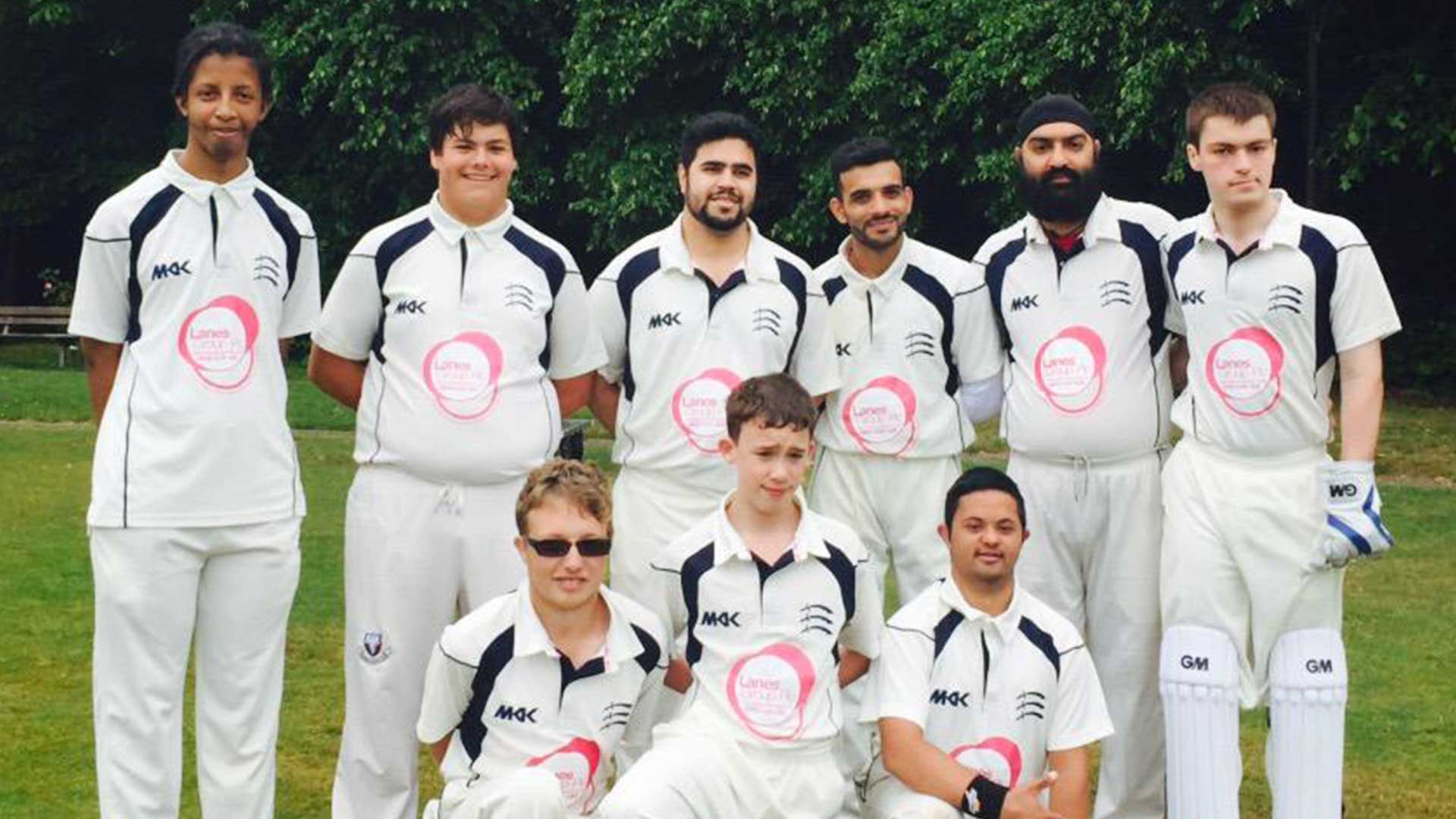
Amanjit Singh
Amanjit was a batter that had been around on the super9s circuit at Hertfordshire for a few years and joined Middlesex in our first season in 2013 to play for his own county.
He quickly established himself as an opening batter and off spinner in the first few training seasons with the squad and continued this position in the team for 3 years before leaving the county to return to India in 2016.
He still holds the current top score by any disability player for Middlesex, with 125 against Kent in 2014, which led to the teams current highest overall score of 356. He also took 2 wickets in that game.
Amanjit was a truly gifted batter, able to score freely against most bowling attacks and to dig in and hold the innings together when needed. He was a leader on and off the pitch and enjoyed the pressure of being up front and opening the batting to get us off to a good start in the game.
